Discover 11 hidden attractions, cool sights, and unusual things to do in Matlock (United Kingdom). Don't miss out on these must-see attractions: National Tramway Museum, Leawood Pump House, and Matlock Bridge. Also, be sure to include Riber Castle in your itinerary.
Below, you can find the list of the most amazing places you should visit in Matlock (England).
Table of Contents
National Tramway Museum
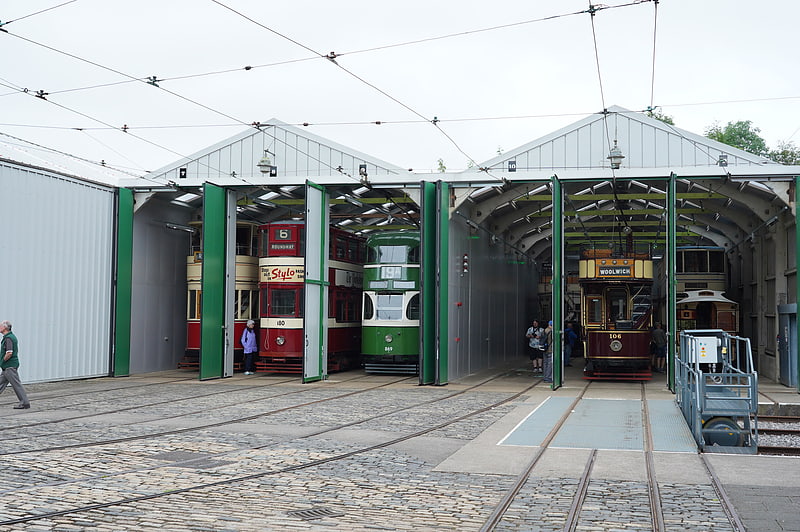
Museum in Crich, England. The National Tramway Museum is a tram museum located at Crich, Derbyshire, England. The museum contains over 60 trams built between 1873 and 1982 and is set within a recreated period village containing a working pub, cafe, old-style sweetshop and tram depots. The museum's collection of trams runs through the village-setting with visitors transported out into the local countryside and back. The museum is operated by the Tramway Museum Society, a registered charity.
The trams at Crich mostly ran in cities in the United Kingdom prior to the 1960s, with trams rescued (even from other countries) as the systems closed. Most of the UK tram networks, with a few exceptions closed before the 1960s. The last to close was Glasgow Corporation Tramways in 1962, a tramway well represented at the museum, leaving just the Blackpool Tramway as the sole surviving first-generation tramway. There has been a recent revival in the use of trams, with new networks opened including Tramlink, Sheffield Supertram, West Midlands Metro, Edinburgh Trams, Manchester Metrolink and the nearby Nottingham Express Transit being built and extended.
In recent years the work of the society members and the income earned from visitors has been supplemented by grants from the Heritage Lottery Fund, the Designation Challenge Fund of the Museums, Libraries and Archives Council and the DEFRA Aggregates Levy Sustainability Fund. The Crich Tramway Village remains an independent charity, which receives no funding from the state or local government and relies on the voluntary contribution made by members of the Tramway Museum Society and its visitors.
The village is also home to the Eagle Press, a small museum dedicated to letterpress printing including an 1859 Columbian printing press.[1]
Address: Cromford Rd, DE4 5DP Crich
Leawood Pump House
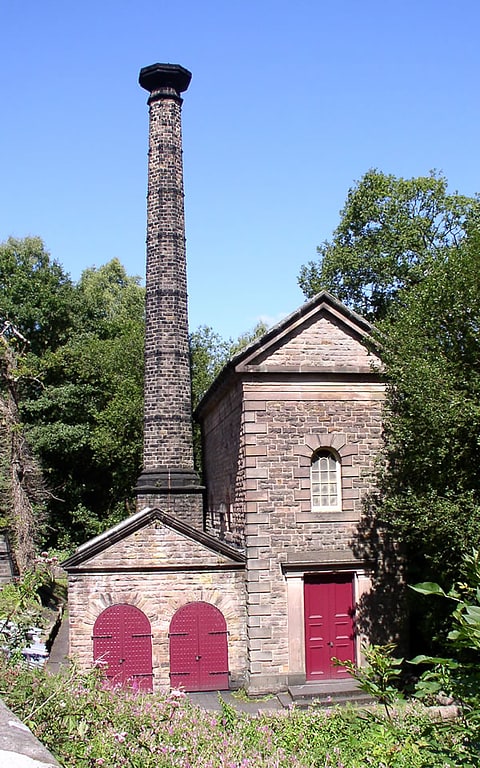
Tourist attraction in Whatstandwell, England. The Leawood Pump House was built near Cromford, Derbyshire, England in 1849 to supply water to the Cromford Canal, built some 50 years previously. It is a Grade II* listed building.
Located a little along the canal towpath from High Peak Junction, it stands to a height of 45 feet (14 m) on the right bank of the River Derwent, at the end of the Derwent Aqueduct, and has a 95-foot (29 m) chimney stack with a cast-iron cap.
The Watt-type beam engine was designed and erected by Graham and Company of Milton Works, Elsecar, Sheffield. The beam length is 33 feet (10 m), the piston diameter 50 inches (1.3 m), stroke of 10 feet (3.0 m) and the engine works at 7 strokes per minute. The boilers, replaced in 1900, have a pressure of 40 p.s.i.
Water is drawn from the River Derwent through a 150-yard (140 m) tunnel to a reservoir in the basement. It is then lifted 30 feet (9.1 m) and discharged into the canal.
The immense size of the pump (which can transfer almost four tons of water per stroke and seven strokes a minute, a total of over 39,000 tons of water per 24 hours) is explained by the fact that there were restrictions on removing water from the Derwent river, this being allowed only between 8 p.m. on Saturdays and 8 p.m. on Sundays.
The pumphouse worked continuously from 1849 until 1944 when the canal closed. It was restored in 1979 by the Cromford Canal Society and is run periodically.[2]
Address: High Peak Junction, DE4 5HN Matlock
Matlock Bridge

Matlock Bridge also known as Derwent Bridge, is a stone bridge spanning the River Derwent in Matlock town centre, Derbyshire, England. The bridge dates back to the 15th century, and is a Grade II* listed structure.[3]
Riber Castle
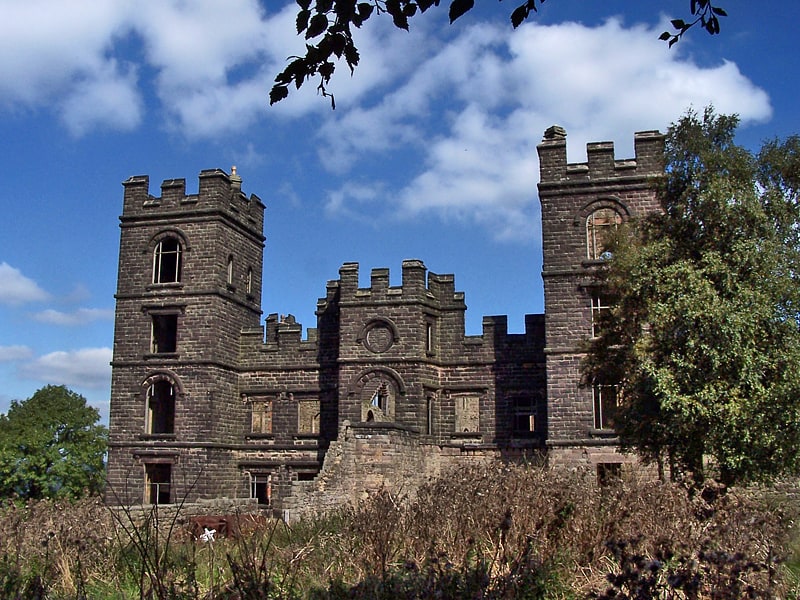
Castle in England. Riber Castle is a 19th-century Grade II listed country house in the hamlet of Riber on a hill overlooking Matlock, Derbyshire. It is built of gritstone from a local quarry which was pulled up the 200-metre hill by a series of pulleys.[4]
St Giles' Church

Church in Matlock, England. St Giles' Church, Matlock is a Grade II* listed parish church in the Church of England in Matlock, Derbyshire.[5]
Address: 116 Church St, DE4 3BZ Matlock
The Loft : Matlock

Concerts and shows, Comedy club, Theater
Address: Princes Building, 36 Crown Square, Matlock
St John the Baptist's Chapel

St John the Baptist's Chapel, Matlock Bath, is a former private chapel in Johns Road, off the A6 road between Matlock Bath and Matlock, Derbyshire, England. The chapel, together with its retaining and attached walls, is recorded in the National Heritage List for England as a designated Grade II* listed building, and is under the care of the Friends of Friendless Churches.[6]
Address: St John's Rd, DE4 3PS Matlock
Matlock Farm Park

Farm, Park, Relax in park
Address: Jaggers Lane, DE4 5LH Matlock
Whitworth Institute
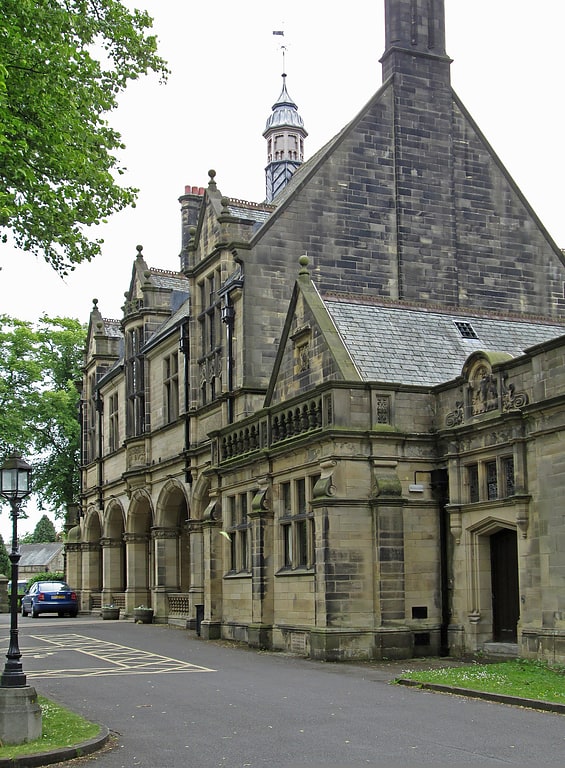
The Whitworth Institute is a Grade II listed building in Darley Dale, Derbyshire.
It was funded by the estate of the late Sir Joseph Whitworth who lived in nearby Stancliffe Hall. The building is constructed of Staincliffe stone with green Westmorland slate. By the end of May 1890 the builders had finished work, and the joiners had moved into the interior. The building cost about £15,000 (equivalent to £1,690,000 in 2020). and although completed by September 1890, was not formally opened until May 1891. It contained a large reading room, a billiard room, a smoke room and playroom on the east side, a small reading room on the west and a swimming bath 54 feet (16 m) by 22 feet (6.7 m). Upstairs there were two further reading rooms, and a large hall 60 feet (18 m) long and 30 feet (9.1 m) wide capable of seating 200 people.
The Whitworth Institute was given to the people of Darley Dale and in 2009/10 underwent a £1.7m renovation to ensure its continued use for future generations.[7]
Address: Station Rd, Matlock
Derwent House
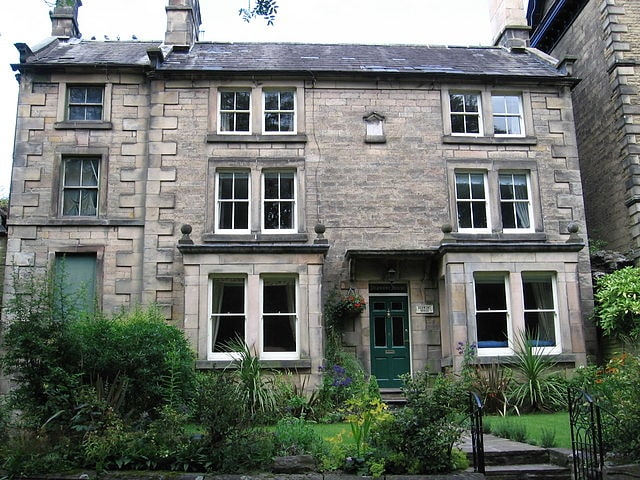
Derwent House is a historic building in Matlock in Derbyshire, England, originally the home of the important Knowles family in the 17th century. The original estate included several buildings surrounding what is now known as Derwent House, including one which is believed to be one of the oldest buildings in Matlock, dating from circa 1670, predated only by the bridge over the River Derwent.
Hall Leys Park is built on land bequeathed by the Knowles family to the parish of Matlock in 1898. Derwent House has been run as a guest house since the mid-20th century.[8]
County Hall
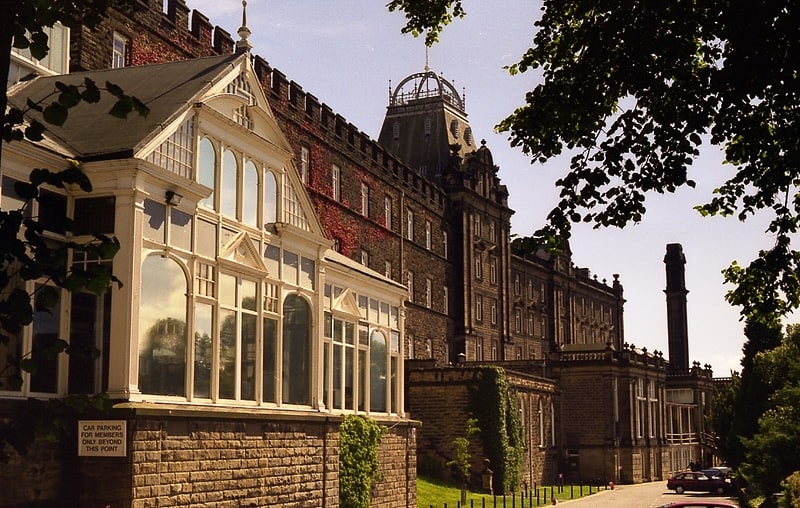
The County Hall is a municipal building in Matlock, Derbyshire, England. The building, which was originally a hydropathic establishment but is now the headquarters of Derbyshire County Council, is a Grade II listed building.[9]